Custom Skateboards: Personal Expression on Wheels
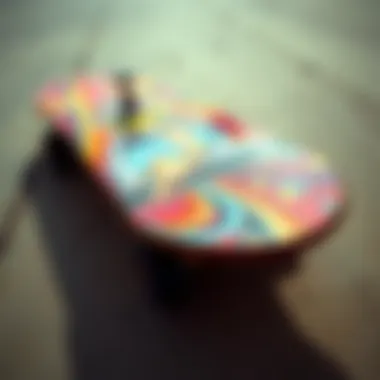
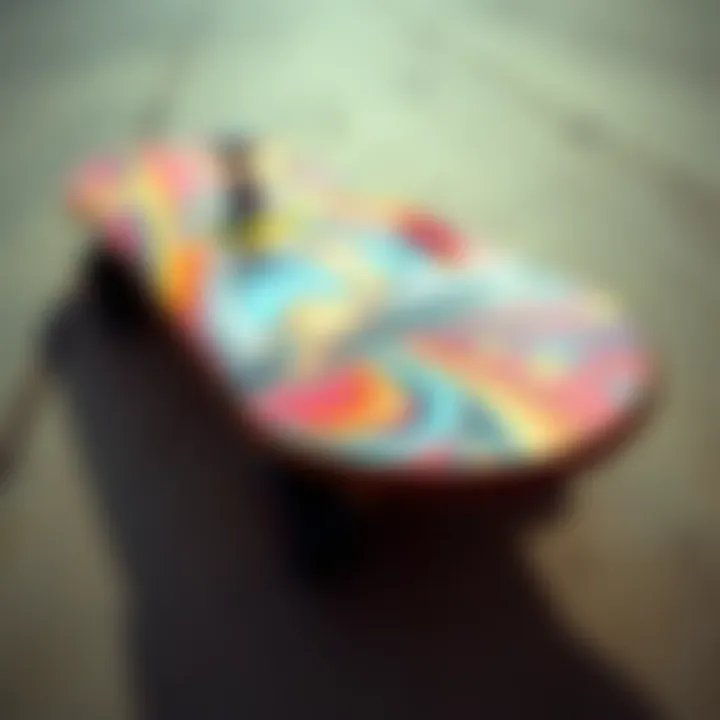
Intro
In the fast-paced realm of skateboarding, a unique artistry emerges. For many skaters, a skateboard is more than just a board; it is a canvas for personal expression. Customisable skateboards are at the heart of this transformation. They allow athletes to pour their personality, style, and creativity into a medium that rolls. Think about it: Isn’t it wild how a simple deck can reflect someone’s identity? Through custom designs, colors, and personalized graphics, skaters make statements that often go beyond words.
The appeal of custom skateboards goes deeper than just aesthetic touches. It connects to the idea of ownership and belonging within a vibrant community. Skateboarding is not merely a sport; it is a culture filled with a rich history and diverse voices. As skaters step onto their boards, they represent not only their individual styles but also the evolution of skateboarding itself.
In this article, we will explore how the art of customizing skateboards serves as a bridge between personal identity and creative expression. We will delve into the techniques, gear, safety measures, and community dynamics surrounding this unique phenomenon. Through this deep dive, the intricate relationship between skateboarding culture and individual self-expression will unfold.
Preamble to Customisable Skateboards
Customisable skateboards represent not just a mode of transportation, but also a means of personal expression that resonates strongly within various subcultures. They carve out a niche where art meets sport, allowing enthusiasts to reflect their own identities while navigating the urban landscape. This article delves into the significance of customisable skateboards, which intertwine creativity and individuality, making them central to the skateboarding experience.
Definition and Concept
At its core, a customisable skateboard is one that allows the user to tweak various components such as the deck, trucks, wheels, and even grip tape to reflect their unique style and preferences. Customisation can range from minor tweaks like adding grip tape with a custom design to complete overhauls involving premium materials and bespoke artwork. The beauty of these skateboards lies in their versatility; they cater to both aesthetic desires and functional needs.
The fundamental concept of customisation ties closely to the concept of individuality in skateboarding. It is not just about performance; it’s about making a statement. A skateboard becomes a canvas where riders can express their thoughts, emotions, and experiences, often revealing layers of their personality in vibrant colors and intricate designs. By selecting specific components, each skateboarder transforms their setup into a reflection of self, embodying their stories and ambitions.
Historical Context
To understand the rise of customisable skateboards, it’s essential to explore their history. Initially, skateboards were simple contraptions, often made of cheap materials with a focus primarily on functionality. The early designs, such as simple wooden boards with metal wheels, did not offer much room for individual expression.
However, the 1970s saw a shift in skate culture, propelled by the advent of street skating and the emergence of pro skaters who started showcasing their artistry. For instance, those early innovators turned tricks into a form of dance, influencing the evolution of skateboard designs to accommodate their needs. By the 1980s, creativity exploded with brands like Santa Cruz and Powell-Peralta introducing decks adorned with vibrant graphics. This paved the way for riders to not only skate but to also showcase their artistic taste.
The concept of customisation gained momentum as skateboarders embraced the idea of personal branding. Brands and artists began collaborating, leading to an influx of unique designs tailored for individual skaters, contributing to a culture that values innovation and self-expression. This shift highlighted skateboarding as not just a sport, but a vibrant art form that allows mere wooden boards to transcend their utility and become significant pieces of personal art.
Through these developments, the connection between skateboarding and personal identity has solidified, making customisable skateboards emblematic of this relationship. With every flip and grind, skateboarders share a part of their identity, emblematic of their journey, aspirations, and beliefs.
Components of Customisable Skateboards
The allure of customisable skateboards lies not just in the thrill of riding; it also hinges on the components that define each board's personality, performance, and potential for expression. Each part contributes not only to how well the skateboard functions but also to how it reflects an individual’s personal style and preferences. In this section, we shall delve into four primary components of customisable skateboards: the deck, trucks, wheels, and grip tape. Understanding these elements is paramount for anyone looking to carve out their identity on wheels.
Deck Materials and Shapes
The skateboard deck is the canvas of creativity, and its materials and shape greatly impact both performance and aesthetic. Decks can be made from various woods, like maple or bamboo, with each offering a different feel when riding. Maple, known for its sturdiness, delivers a traditional popping sound that many skateboarders love. Bamboo, conversely, provides flexibility and a lighter feel, appealing to those who prefer a smoother ride during tricks or long-distance skating.
Shapes also vary widely—some riders opt for the classic popsicle shape ideal for tricks, while others might choose a wide cruiser deck for stability and comfort. Custom options allow for a realm of artistic expression, with graphics that display personal beliefs, interests, or styles, from intricate artwork to minimalist logos. When selecting a deck, one must ponder not only the style and material but also how it aligns with their skating aspirations.
Trucks: Functionality and Style
Next up are the trucks, the metal parts that hold the wheels in place and allow for turning. Choosing the right trucks is like picking the right partner for a dance; they need to work in sync with the rider's style and preferences. Trucks come in various widths and height profiles, dictating how the skateboard handles and feels underfoot.
For instance, lower trucks offer more stability and are ideal for street skating, while higher trucks are favored for larger wheels and tricks that involve more airtime. Some brands even allow riders to customize colors and designs, making trucks not just functional but also stylish. Ultimately, the right trucks elevate performance and lend a distinctive flair to the overall look of the skateboard.
Wheels: Sizes and Hardness
Wheels are another crucial consideration, as they define the ride quality and performance style. Skateboard wheels come in various sizes, typically ranging from 50mm to 60mm, where smaller wheels are suited for technical tricks, and larger ones are better for cruising and bowls. It's essential to choose a wheel that complements the rider’s overarching skating goals.
Moreover, wheel hardness plays a vital role in the experience. Measured on a durometer scale, harder wheels (rated above 100A) are perfect for street skating and tricks in urban areas, while softer wheels (below 95A) are better suited for rough surfaces and provide a smoother ride. Mixing and matching different sizes and hardness levels can create unique riding characteristics, giving a skateboard a personality that matches its rider.
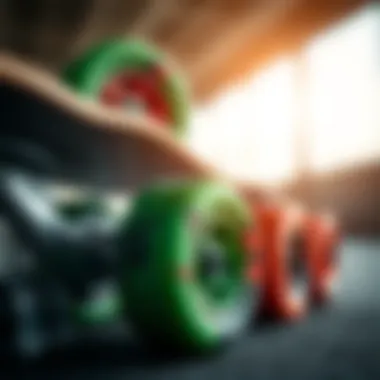
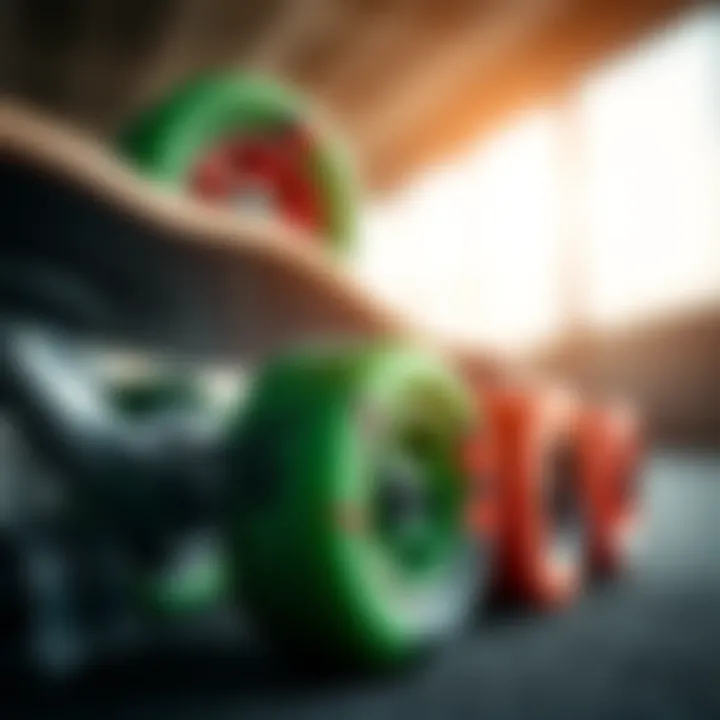
Grip Tape: A Personal Touch
Last but not least is grip tape, which may seem trivial at first glance, yet it offers a critical function along with personal flair. Grip tape is applied to the top of the deck, ensuring that the rider's feet don’t slip during tricks and turns. However, it also serves as a canvas for personalization. Custom grip tapes come in various designs, colors, and textures, allowing skaters to express their individuality or even showcase their favorite brands or artworks.
"A skateboard is more than just a mode of transportation; it's a reflection of who you are and how you skate."
Ultimately, grip tape can firmly anchor a rider's identity, melding functionality with personal expression.
The Role of Art and Design in Skateboarding
Art and design play a pivotal role in skateboarding, serving as a crucial means of personal expression and creativity for riders across the globe. When one glides down the street, it's not just the performance of their deck that speaks volumes; it's also the artistry displayed on it. In a world where individuality reigns supreme, the visuals on a skateboard can tell a story that words often cannot articulate.
The importance of this artistic dimension can hardly be overstated. Skateboards have evolved into canvases showcasing the values, moods, and identities of their owners. This elevates skateboarding beyond merely a sport; it becomes a form of art in motion, reinforcing the culture surrounding it. Creativity is not just an afterthought but a core aspect of the skating experience, influencing everything from design to community interaction.
Artistic Expression through Skateboards
The beauty of skateboarding lies in its unrestricted nature, especially when it comes to artistic expression. Customisable skateboards allow individuals to imprint their personal narratives—be it through vibrant colors, intricate designs, or thought-provoking graphics. This freedom encourages creativity and fosters a deeper connection to the skateboard, enhancing the ride itself.
Skaters often see their boards as extensions of their personalities. For instance, someone who favors a sleek, minimalist design may appreciate the understated yet powerful statements made through simplicity. In contrast, another rider may opt for bold and painstakingly crafted graphics that reflect their vibrant lifestyle.
Moreover, many skaters engage in DIY decorating, using materials like paints, stickers, or even carvings. This hands-on approach does not just personalize their boards, but also builds a sense of camaraderie within the community as they share techniques and ideas. The act of customizing is thus imbued with a sense of belonging, reinforcing ties among skaters.
Famous Artists and Collaborations
The connection between skateboarding and art has led to numerous collaborations with renowned artists. Big names like Shepard Fairey and Jeff Koons have lent their unique styles to skateboard decks, resulting in limited-edition pieces that can become collectible treasures. These collaborations transcend mere commercial transactions; they create culturally significant art within a vibrant subculture.
For example, the collaboration between the artist Andy Warhol and the skateboard brand Anti-Hero showcased not only Warhol's iconic pop art but also how mainstream art can seep into street culture, enriching both realms. This synergy has helped to elevate skateboarding to an art form, deserving of recognition and respect in the broader artistic community.
"Every skateboard is a moveable piece of art, embodying the spirit and creativity of its rider."
Such partnerships do not just amplify the aesthetic value of skateboards; they challenge mainstream notions of art and culture by positioning skateboards as platforms for high-impact artistic expression.
As artistic vision continues to intertwine with skateboarding, the future holds limitless potential for innovation and expression on wheels.
Cultural Significance of Customisable Skateboards
Customisable skateboards go beyond simple transportation; they serve as a canvas for self-expression and a reflection of personal identity. This aspect of skateboarding is deeply intertwined with community dynamics and cultural movements, revealing the values and aspirations of the youth who adopt them. By exploring these cultural undercurrents, we can understand the premise of individuality and collective identity among skateboarders.
Identity and Community
Skateboards are not just boards with wheels; they are a declaration of identity. The design choices made by a skater—be it the graphics, colors, or components—often speak volumes about their personality and where they fit into the broader skateboarding community. When a skateboarder opts for a vibrant, intricate deck design, they may be signaling an inclination towards a bold lifestyle contrasted against a more minimalist approach embraced by others. These choices are not random; they echo the wearer's values, experiences, and influences.
This attachment to one's skateboard can help forge connections among peers. For many, skateboarding becomes a communal activity where shared spaces, like skate parks, transform into hubs of creativity and collaboration. In these spaces, a custom board can initiate conversations, foster camaraderie, and encourage discussions about aesthetics, techniques, and the motivations behind particular designs. As skaters meet, they begin to recognize each other's visual languages, creating a sense of belonging that extends beyond the act of skating itself.
Moreover, customisation allows room for collaboration. Many skateboards feature artwork from local or emerging artists, which cultivates support within the community while offering a platform for individuals to display their artistic talents. A custom board can reflect multiple influences—musical tastes, local culture, and even political beliefs—making it a dynamic piece of art that evolves and resonates over time.
As shared expressions of identity transform into collective expressions of culture, one can see how customisable skateboards act as living testimonials to the skaters' experiences. They allow individuals to embrace diversity while promoting unity within subcultures. This juxtaposition enriches the skating scene, attracting a dynamic mix of personalities and styles.
Impact on Youth Subcultures
The significance of customisable skateboards can’t be understated when looking at their impact on youth subcultures. Skating as a sport and activity has roots deeply ingrained in counterculture, rejection of mainstream standards, and cultivation of individuality. Customisable skateboards embody these ideals, offering young people an outlet to push back against societal norms.
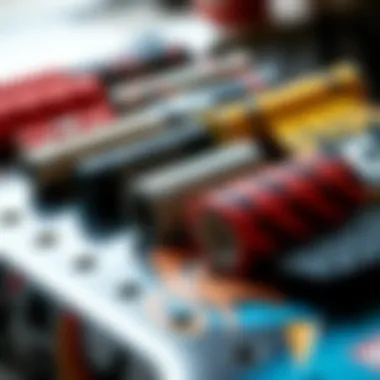
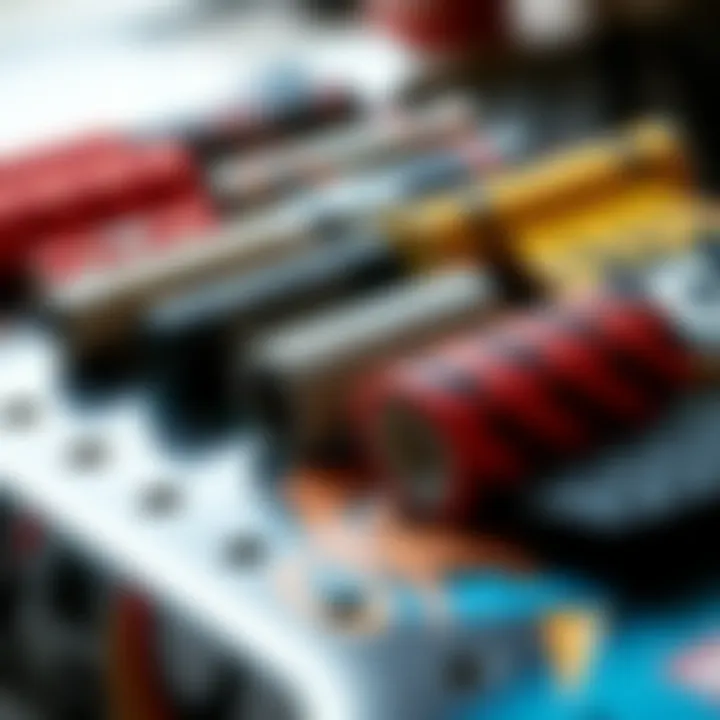
For many youths, making their skateboard unique can be a form of rebellion. It allows them to challenge the status quo and express their dissent in a culturally relevant way. This is particularly important in today’s society, where the need for individual recognition is heightened by social media and online platforms.
As a result, subcultures flourish. Take the rise of genres like streetwear, which pulls inspiration from skateboard culture. Influencers promoting specific skateboard designs often create waves, influencing trends and shaping how young people present themselves in urban environments.
Additionally, engagement with customizable skateboards introduces youths to concepts of craftsmanship and design—skills that can later be applied in various fields such as art, engineering, and fashion. The act of customizing a skateboard teaches young people about the importance of quality materials and thoughtful design, reinforcing a sense of pride in their creations.
In essence, customisable skateboards play a critical role in shaping youth subcultures by fostering a sense of identity and belonging, while simultaneously cultivating the skills and awareness needed to navigate and influence the world around them. As these young individuals embrace and revitalize their spaces, they breathe life into culture, ensuring its evolution continues constructively and sustainably.
"Skateboarding is not just a sports activity, it's a way of life that breeds creativity and fosters community."
By tapping into the deeper cultural significance of customisable skateboards, we find that they act not just as personal vehicles, but as pivotal tools for expression, connection, and empowerment among today's youth.
Psychological Aspects of Customisation
The realm of skateboarding is not just about tricks and flips; it extends into emotional and psychological landscapes where personal expression flows seamlessy. Customisation of skateboards plays a vital role in shaping identities and enhancing self-worth among riders. This section delves into two fundamental aspects: connection to personal identity and the sense of ownership and agency.
Connection to Personal Identity
For many skateboarders, their board acts as an extension of themselves. The skateboard is not just a means of transport; it reflects their personality, values, and beliefs. When riders put their personal touch on a skateboard, it becomes a canvas that speaks volumes about who they are.
Customising elements such as deck designs, grip tape patterns, and wheel colors allow individuals to express themselves in ways that words often fail to convey.
- Visual Expression: Colors and graphics chosen in customisation echo personal preferences and cultural backgrounds. An intricate design might resonate with someone’s artistic side, while a bold logo could reflect a rebellious spirit.
- Community Identity: Customised skateboards often create a sense of belonging within a culture. A skateboard may be adorned with particular symbols or imagery that ties the rider to specific subcultures or communities.
"A skateboard tells a story—its designs reflect where it’s been and who it belongs to."
By making a skateboard unique, riders articulate their personal narratives and connect to like-minded individuals. This bond can foster deeper relationships and camaraderie.
Sense of Ownership and Agency
Customisation offers skateboarders a profound sense of control over their wheels—not just in styling, but in how they navigate their world. This agency can significantly affect a rider's connection to their board and, ultimately, to themselves.
When skateboarders design their setups, they are making choices that affirm their preferences and desires.
- Empowerment: Crafting a skateboard fosters empowerment. The choices made during customisation, whether selecting materials or colors, manifest individuality and reflect personal journeys. Each choice is a conscious decision that exemplifies autonomy.
- Emotional Attachment: A skateboard that one has personalised can evoke stronger emotional ties than a standard, off-the-shelf product. Like that old guitar in the corner, it embodies memories, struggles, and triumphs.
This sense of ownership can also translate to improved confidence on the board. Riders who feel connected to their skateboard are often more engaged, leading to better performance. Skateboarding becomes a pathway for not just physical expression, but also for affirming identity and individuality in a world that often imposes conformity.
In summary, the psychological benefits that come with skateboard customisation are impressive. Riders craft their narratives, express their identities, and embrace their individual choices on their own terms. Understanding these elements provides insight into how skateboarding transcends mere sport and enters the realms of art and personal expression.
Customization Techniques and Tools
Customization techniques and tools serve a crucial role in the world of customisable skateboards, facilitating a unique journey towards personal expression on wheels. These methods not only enhance the skateboard’s functionality but also reflect the rider's personality, creativity, and style. For many, customizing a skateboard is akin to an artist choosing their canvas; it becomes an outlet for self-expression, pushing the boundaries of traditional designs and allowing for a deeper connection with the sport.
When we talk about customization, it’s essential to consider several key elements:
- Functional Enhancements: Tailoring aspects like deck shape, wheel hardness, and truck size can significantly impact ride quality.
- Aesthetic Choices: The design and artwork on a skateboard contribute not just to its look but also to the message it communicates.
- Personalization Tools: Different tools and techniques enable skateboarders to add personal touches, from custom grip tape patterns to unique decals.
DIY Customisation Guide
Embarking on the DIY path for skateboard customization can be a highly rewarding process that brings a sense of satisfaction. Here’s a straightforward guide to help you get started:
- Choosing the Right Deck: Start with the type of skateboard deck you want. Consider dimensions that suit your style.
- Selecting Graphics and Paint: Use vinyl stickers, spray paint, or even marker pens for original designs. Make sure they resonate with who you are.
- Grip Tape Application: Using custom grip tape not only enhances performance but adds a touch of flair. Cut the grip tape into shapes to create personal designs.
- Neat Wheel and Truck Customization: Wheels come in various colors and patterns. Mixing and matching can lend an exciting balance. Consider painting or changing the bushings in your trucks for extra flair.
- Sealing the Design: After crafting your one-of-a-kind look, seal it with a clear coat to protect your work from wear and tear. This will help maintain both aesthetics and durability.
A successful DIY project speaks volumes about your commitment to individuality and creativity. Not to mention, it can foster a sense of community as you share your personalized board with fellow enthusiasts.
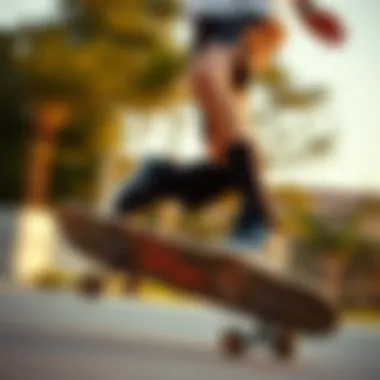
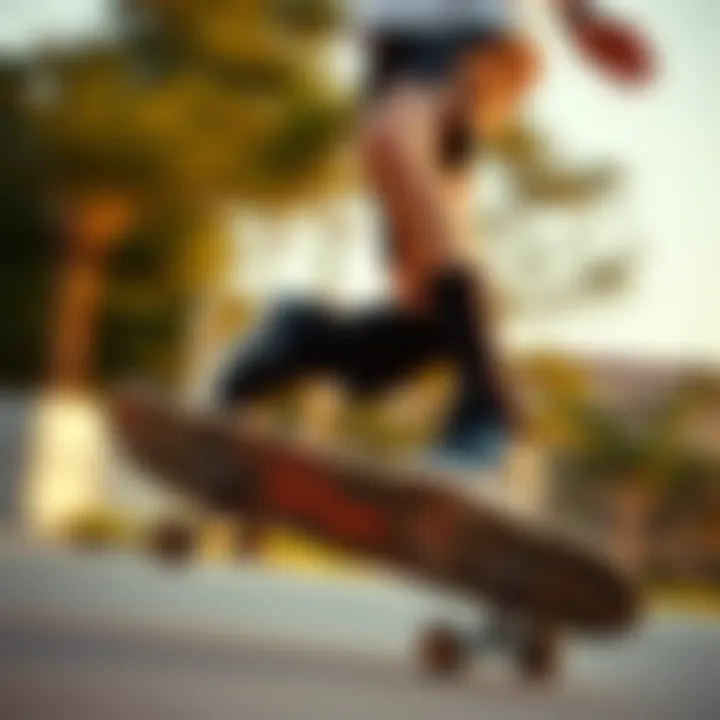
Professional Customization Services
For those who may prefer a more polished result, professional customization services present an array of options. Hiring a skilled service can provide enhanced quality and artistic flair that might elude the DIY approach. Here’s what to consider if you choose this route:
- Expertise and Quality: Professionals have the experience and tools necessary to create intricate designs that meet high standards.
- Collaborative Services: Many customization shops offer collaborative opportunities where you can work with artists to create something uniquely tailored to your vision.
- Sustainable Practices: Look for companies committed to sustainable production methods, especially as many riders are increasingly conscious of their environmental impact.
- Customization Packages: Some shops offer all-in-one packages covering different aspects of customization, from graphic design to installation of components.
Finding the right professional service can elevate your skateboard to a whole new level of expression, marrying functionality with aesthetic appeal. It’s an investment in both your skating experience and your personal journey as a skateboarder.
"Customization is not just about altering an object; it’s about transforming it into a reflection of who you are and what you stand for."
Ultimately, whether you opt for the DIY route or seek out professional assistance, the choices you make in customizing your skateboard form a dialogue with your identity, style, and passion for the sport. As this culture continues to evolve, the techniques and tools available will undoubtedly expand, offering even more avenues for personal expression.
The Future of Customisable Skateboards
The evolution of skateboarding as a sport and art form is at an exciting juncture. With water cold and opportunities fresh, skateboard enthusiasts are embracing an array of customizable options that promise to enhance both performance and personal expression. As technology progresses and environmental consciousness grows, the future of customisable skateboards is poised to break boundaries previously set by traditional designs. This section dives into what lies ahead in this vibrant world where individuality and innovation ride hand in hand.
Technological Innovations
The influence of technology on sports is undeniable. Skateboards are no exception to this trend. Innovations are being introduced at a rapid pace, promising to revolutionize how skateboarders customize their rides. Consider smart skateboards equipped with sensors that provide real-time feedback on performance metrics. Skateboarders can glean insights on speed, balance, and even their riding patterns through mobile applications. These advances not only make skating safer but also help aficionados fine-tune their skills, offering them an edge in both style and performance.
Moreover, new materials are reshaping the performance landscape. For instance, lightweight composites and carbon fiber are being used to create decks that are both sturdy and agile. Imagine a skateboard that not only withstands heavy use but also offers a unique design aesthetic with each rider’s input combined with advanced engineering. When these intricate designs are printed or finished using 3D printing techniques, the possibility for personal expression becomes limitless.
Furthermore, augmented reality (AR) can reshape the customer experience at the design stage. Online platforms can allow skateboard enthusiasts to visualize their creations in a virtual environment before they finalize their orders. This shift from traditional physical mock-ups to digital simulations creates an immersive experience, enticing more individuals into customizing their skateboards.
Sustainable Practices in Skateboard Manufacturing
As the world gets greener, the skateboard industry is embracing sustainability with open arms as consumers increasingly demand environmentally friendly products. From ethically sourced wood to eco-conscious manufacturing processes, companies are pivoting toward practices that honor the planet.
One such development involves using bamboo or recycled materials, which not only reduce reliance on trees but also manufacture durable products that can withstand wear and tear. The bamboo deck has gained traction not solely for its flexibility but also for its low environmental impact.
Moreover, there’s a push from many skate brands toward carbon-neutral manufacturing processes. As these brands strive to minimize their ecological footprints, eco-friendly paint and water-based sealants are being used, replacing traditional chemical-laden options. Consumers are now privy to the choice of environmentally friendly designs, allowing them to express their personal values as much as their artistry.
Incorporating sustainable practices allows skateboard manufacturers to stand out in an increasingly crowded market. As skateboarders become more conscientious of their impacts on the environment, customization is no longer just about aesthetic; it's also about making responsible choices.
"The future of skateboarding isn’t solely about how you carve the street but how you can make a difference while doing it."
Collectively, the advances in technology paired with a focus on sustainability pave the way for exhilarating changes in the customisation landscape. As these elements intertwine with personal expression, they will shape the future of skateboarding, encouraging more riders to engage, explore, and create in their unique ways.
The End: The Intersection of Individuality and Sport
The journey into the world of customisable skateboards reveals significant insights into how individual expression can merge with the dynamics of sport. Customisation isn't simply about adding personal flair to a board; it is a powerful vehicle for identity and community. This makes it crucial in understanding not just skateboarding, but wider social phenomena where youth express themselves through actions and aesthetics.
In this article, we explored the various facets of customisable skateboards, acknowledging that their evolution is a reflection of personal narratives. From choosing the right deck material to selecting vibrant designs, each choice resonates with who the skater is. The convergence of style and function speaks volumes about the sport's cultural significance.
Here are key themes worth recapping:
- Personal Identity: The skateboard as a canvas allows individuals to broadcast their preferences and beliefs, blending art and sport in unique ways.
- Community Bonding: The act of customisation fosters a sense of belonging among skaters, creating bonds that go beyond geographical constraints.
- Psychological Impact: Engaging in the process of personalising a skateboard enhances feelings of ownership and enhances the emotional connection to the sport.
- Innovation and Sustainability: The future of skateboarding looks promising with the integration of new technologies and sustainable materials, emphasizing the importance of environmental consciousness.
Recap of Key Themes
To summarize, the intersection of individuality and sport in the realm of customisable skateboards transcends mere aesthetics. It blends self-expression with athleticism, illustrating how personal choices shape collective experiences. By engaging in customization, skaters are not just participating in a sport; they are crafting their own identities within a community that celebrates diversity. This highlights important aspects of personal development in youth culture, whereby skateboarding can serve as a catalyst for self-understanding and expression.
Final Thoughts on Customisable Skateboards
This exploration of customisable skateboards reiterates their significant role in the lives of many thrill-seekers. As we delve deep into not just how boards are made, but how they symbolize personal journeys, we start to grasp the impact of these rides on community interactions. Customisable skateboards provide not just a means to ride, but also embody a philosophy of freedom and creativity. As new innovations surface and sustainable practices take root, the future of skateboarding's artistic pathways looks bright. The skateboard will continue to be a powerful medium for personal expression and cultural dialogue for years to come.
As the wheels spin and tricks are executed, let each rider’s story unfold, highlighting their individuality in a sport that thrives on freedom and self-expression.





